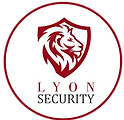Enhancing Safety with Advanced Access Control Management Solutions
- Lyon Security

- Sep 1
- 4 min read
Security is a top priority for any business or residential area. Protecting people, property, and assets requires more than just physical barriers. It demands smart, reliable systems that control who can enter and exit specific areas. Advanced access management solutions provide this capability. They offer a modern approach to security that adapts to evolving threats and operational needs.
I have seen firsthand how these solutions improve safety and efficiency. They help reduce risks, streamline operations, and provide peace of mind. In this post, I will explain the key benefits of advanced access management solutions, explore practical examples, and offer actionable advice for implementation.

Why Choose Advanced Access Management Solutions?
Traditional security methods like locks and keys have limitations. Keys can be lost, copied, or stolen. Physical barriers alone do not track who enters or leaves a property. Advanced access management solutions overcome these challenges by using technology to control and monitor access.
These systems use electronic credentials such as cards, fobs, or mobile apps. They can integrate with video surveillance, alarms, and visitor management systems. This integration creates a comprehensive security network that is easy to manage and update.
Some key advantages include:
Improved control: Grant or restrict access instantly based on roles, schedules, or locations.
Audit trails: Record every entry and exit for accountability and investigation.
Remote management: Adjust permissions and monitor activity from anywhere.
Scalability: Expand the system as your security needs grow.
Convenience: Eliminate the need for physical keys and reduce lock changes.
For businesses and residential areas in Cape Town, these benefits translate into safer environments and smoother operations. The ability to customize access rights ensures that only authorized individuals enter sensitive areas.
Access Management Solutions Tailored for Your Needs
Choosing the right access management solution depends on your specific security requirements. Factors to consider include the size of the property, number of users, and level of security needed. A well-designed system balances security with ease of use.
Here are some common types of access management solutions:
Card-based systems: Users carry a card or fob that they swipe or tap at a reader.
Biometric systems: Use fingerprints, facial recognition, or iris scans for identification.
Mobile access: Allow entry through smartphones using Bluetooth or NFC technology.
Keypad entry: Require a PIN code to unlock doors.
Multi-factor authentication: Combine two or more methods for higher security.
Each option has pros and cons. For example, biometric systems offer high security but may be costly. Card-based systems are affordable and widely used but require managing physical credentials. Mobile access is convenient but depends on users having compatible devices.
A professional security provider can assess your site and recommend the best solution. They will consider factors like integration with existing systems, user training, and maintenance.

What is an example of access control?
A practical example of access control is a corporate office building using a card-based system combined with biometric verification. Employees receive ID cards programmed with access rights for specific floors and rooms. When an employee approaches a door, they swipe their card and then scan their fingerprint.
This two-step process ensures that only authorized personnel enter restricted areas. The system logs the time and identity of each entry. Security staff can review these logs to detect unusual activity or investigate incidents.
Another example is a gated residential community using mobile access. Residents download an app that communicates with gate readers. Visitors request access through a virtual intercom system, and residents approve or deny entry remotely.
These examples show how access management solutions can be tailored to different environments. They improve security while maintaining convenience for users.
Implementing Advanced Access Management Solutions
Successful implementation requires careful planning and execution. Here are steps to guide the process:
Conduct a security audit: Identify vulnerable points and define access zones.
Set clear policies: Determine who needs access to what areas and when.
Choose the right technology: Select hardware and software that fit your needs and budget.
Train users: Educate staff and residents on how to use the system properly.
Test thoroughly: Run pilot tests to identify and fix issues before full deployment.
Maintain regularly: Schedule updates, inspections, and repairs to keep the system reliable.
It is also important to have a support plan in place. Technical issues can arise, and quick resolution is critical to maintaining security.
Partnering with a trusted security provider ensures you get expert advice and quality products. They can customize solutions and provide ongoing support.

The Future of Security with Access Management
Technology continues to evolve, offering new possibilities for access management. Artificial intelligence and machine learning can enhance threat detection and response. Cloud-based systems enable seamless updates and remote access control.
Integration with other smart building technologies creates a unified security ecosystem. For example, access events can trigger lighting, alarms, or lockdown procedures automatically.
As threats become more sophisticated, so must our security measures. Advanced access management solutions provide a flexible foundation to adapt and grow.
By investing in these systems, you protect your premises, people, and assets effectively. You also demonstrate a commitment to safety that builds trust and confidence.
If you want to learn more about how to enhance your security with modern access management solutions, consider exploring professional services that specialize in this field. They can help you design and implement a system tailored to your unique needs.
For more information on reliable access control options, visit trusted providers who understand the local context and challenges.
Safety is not just a goal - it is a continuous process. Advanced access management solutions are a key part of that process.





Comments